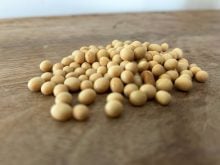SOUTHWEST
Isolated rain showers and severe thunderstorms plagued parts of the southwest and north of Highway 45. Minor frost also occurred.
Pastures improved with recent rains, but frost and cool temperatures are limiting the expected growth. Dugouts remain at capacity. Limited harvest progress was made.
Pea yields are average with some fields below average due to early season root rot. Winter yields range from 45 to 65 bushels per acre with moderate fusarium levels. Spring wheat yields are 55 to 65 bu. per acre with low fusarium levels.
Read Also

Federal budget shows remaining disconnect between agriculture, policymakers, panelists say
Canada’s agriculture sector is still disconnected from policymakers in some ways, say panelists at a CAPI webinar
Early canola yields range 40 to 50 bu. per acre. Producers are swathing late canola fields to minimize damage from potential frost.
Soybeans haven’t advanced in maturity much because of weather conditions.
Corn and sunflowers need heat.
Winter wheat seeding is minimal.
Foxtail barley is a major weed issue and present on unseeded areas or moisture stressed areas.
NORTHWEST
Wind, rain, frost and harvest weather came to parts of the region. The highest recorded rainfall was in the southern area. Frost was recorded at several locations.
Some combining occurred. Much of the crop has tested tough and is being aerated.
More than 90 percent of the wheat crop is ripe, but harvest varies from less than five percent to 70 percent.
Sixty percent of the canola crop is swathed and less than five percent combined. Most of the soybean crop is podded. Harvest of the pea crop is complete with average yields. Little to no seeding of winter wheat and fall rye has occurred.
Rain has stopped most harvest operations in the southwest.
CENTRAL
Weather slowed the harvest last week. Frost hit the western part of the region.
Cereal grain was harvested tough to damp and required aeration or drying.
Winter wheat harvest is complete. Yields average 50 to 70 bu. per acre. High levels of fusarium have damaged the quality.
Fall rye yields are 50 to 60 bu. per acre.
Barley yields in the east are 70 to 100 bu. per acre in good quality. Some is downgraded because of mildew and sprouting.
Spring wheat’s early yields are 45 to 80 bu. per acre. It is in good quality.
Oat yields are 90 to 140 bu. per acre with good weight.
Canola swathing continues except for the latest seeded crops. Yields are 40 to 45 bu. per acre and higher.
Soybean fields are seeing leaf colour change in most fields. Leaf spotting, brown spot, bacterial blight, root rot, and downy mildew have been found.
Large seed sizes for kidney and cranberry beans have been reported. Pick is low. Corn is variable with most in the dent stage. Sunflowers are mostly at R7 to R8. Rust and sclerotinia head rot are reported in sunflowers.
EASTERN
Light showers occurred throughout the cooler region. Topsoil moisture level on most of the annual cropland is adequate. Some areas received light frosts.
Harvest was slow, with most cereals harvested tough. Some canola is being swathed to minimize frost-induced pod shelling.
Spring wheat yields are averaging 60 to 80 bu. per acre. Canola averages 30 to 50 bu. per acre. Soybeans are in the R7 stage with leaves dropping and pods beginning to turn. Corn is in the dent stage. Sunflowers are in the R7 stage with the back of the head starting to turn yellow.
Winter wheat seeding is beginning. More seeding will occur this week as the canola harvest continues and stubble fields become available.
INTERLAKE
Scattered showers occurred throughout the region. Frost was reported.
Harvest is around 40 percent complete.
Spring cereals continue to be harvested tough. Spring wheat grades are No. 1 to 3 because of mildew, fusarium and sprouting.
Wheat yields are 45 to 65 bu. per acre, oats are 80 to 110 bu. per acre, barley 60 to 60 bu. per acre and canola 25 to 45 bu. per acre.
Desiccating is beginning on alfalfa seed fields.
Soybeans are starting to show colour change and leaf drop.
Winter wheat seeding is minimal because of the late stages of canola and delayed harvest.
Many hayfields and cropland are still too wet to travel on with equipment.














